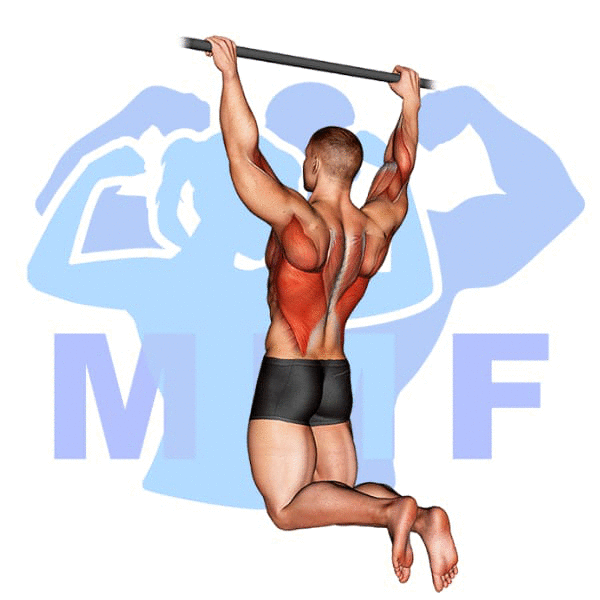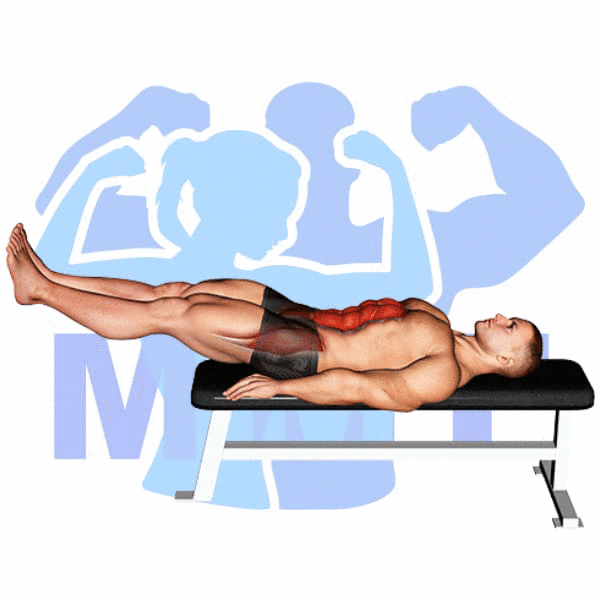Do you suffer from lower back pain or weakness in your core muscles? Have you tried traditional exercises and still don’t feel like you’re making any progress? You might benefit from incorporating the lying knee raise into your routine. It’s a common misconception that lower back pain stems from weak muscles in the back; however, this is rarely the case. More often than not, the pain is associated with weak abdominal muscles. By targeting your core with exercises such as the lying knee raise, you can alleviate some of the discomfort. In this blog post, we’ll break down how to do a lying knee raise correctly and the benefits it can have for your overall health.
Lying Knee Raise Summary
- Primary Muscles: Rectus Abdominis
- Secondary Muscles: Adductor Brevis, Adductor Longus, Iliopsoas (Psoas Major & Iliacus), Obliques, Pectineus, Rectus Femoris, Sartorius, and Tensor Fasciae Latae
- Equipment: Body Weight
- Mechanics Type: Compound
- Force: Pull
- Utility: Basic

Lying Knee Raise Instructions
- Start out by lying on your back on a flat surface or bench with your arms out to the side for balance.
- First, raise your feet slightly off the ground and don’t let them touch throughout the exercise.
- Now pull your knees up to your chest using your abs.
- Then straighten your legs out to the starting position, remembering to not touch the ground.
- Repeat your Lying Knee Raise for 10-20 repetitions, going slower for more of a challenge.
Video Tutorial
Lying Knee Raise Muscles
Target (Agonist)
Synergists
- Adductor Brevis
- Adductor Longus
- Iliopsoas (Psoas Major & Iliacus)
- Obliques
- Pectineus
- Rectus Femoris
- Sartorius
- Tensor Fasciae Latae
Dynamic Stabilizers
- Rectus Femoris
Stabilizers
Antagonist Stabilizers
- None

Benefits of Lying Knee Raise
The lying knee raise is an excellent exercise for targeting the rectus abdominis. This exercise requires no equipment and can be done anywhere with a flat surface. The lying knee raise works the rectus abdominis by engaging the core muscles to pull your knees towards your chest. As you pull your knees up, the rectus abdominis must work hard to keep your torso stable and to protect your lower back from any strain. As a result, this exercise strengthens the rectus abdominis and builds core strength. Additionally, the lying knee raise can also help improve posture and balance due to the increased stability it provides in the core area.
Tips for Performing Lying Knee Raise
Your at the right place if you’re motivated to advance your lying knee raise execution. Using these tips will allow you to take full advantage of this amazing workout. You will develop your abs muscles, and even lower your chances of experiencing an injury. Let’s begin and take a look at how these suggestions will benefit you.
- Make sure to keep your back straight when performing the Lying Knee Raise. This will help you to isolate your lower abdominal muscles, and it will also help you maintain proper form while performing the exercise.
- Focus on your breathing during the exercise. Exhale as you raise your legs and inhale as you lower them. This will help you to stay in control and perform the exercise with proper form.
- Make sure to move slowly and with control during the exercise. This will help to ensure that you are activating the right muscles and that you are getting the most out of the exercise.
Benefits and Tips Video
Frequent Mistakes To Avoid
Staying away from errors might be the distinction between a successful training session and an injury when executing lying knee raise. Moreover, achieving the most out of the exercise requires proper technique, and avoiding perform typical mistakes can allow you to perform the exercise correctly and obtain optimal results. But relax, it’s not quite as difficult as it might appear. By knowing the mistakes to avoid and taking the appropriate actions, you may complete the activity securely and effectively. So let’s get started on avoiding those typical mistakes and making this exercise a normal part of your strength training.
- Not engaging your core muscles: Not engaging their core muscles while performing the Lying Knee Raise will not give them the full benefits of the exercise, as it won’t properly strengthen their abdominal muscles.
- Not controlling the movement: If your do not control the movement of the exercise, they will not be able to properly target their abdominal muscles and will not get the full benefit from the exercise.
- Not maintaining good form: Not keeping their back flat against the floor and not keeping their feet close to their body during the Lying Knee Raise will make it much harder to correctly target their abdominal muscles and get the most out of the exercise.
Find More Bodyweight Exercises Here
Variations and Complementary Exercises
Different exercises can help strengthen the same muscles as the lying knee raise. If you’re looking to switch up your routine or find a variation of the exercise, consider trying out one of the following exercises that work similar muscles.
Lever Seated Leg Raise Crunch (Machine)
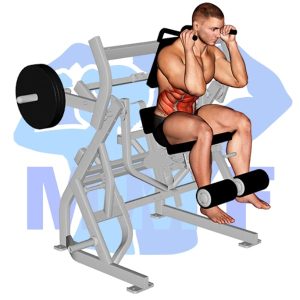
The Lever Seated Leg Raise Crunch is a great alternative or complementary exercise to the Lying Knee Raise. This machine allows you to use your core and upper body muscles to bring your legs up towards your chest, while also engaging the lower abdominals. It can help to develop both stability and strength in the abdominal region. Additionally, it can provide an increased range of motion than traditional Lying Knee Raises, which can help to target the abs more effectively. The Lever Seated Leg Raise Crunch is a great way to add variety to your abdominal workouts, as well as build overall strength in the core.
Lever Seated Crunch (Machine)
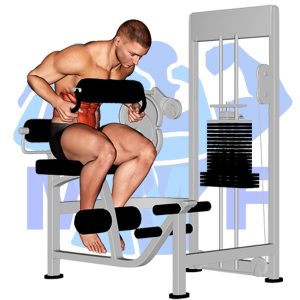
The Lever Seated Crunch (Machine) is a great alternative or complementary exercise for the Lying Knee Raise. This machine works by sitting with your back against a padded lever, grasping the handles and crunching your torso up and down. This exercise targets the abdominal muscles in a way that is similar to the Lying Knee Raise, but with less stress on the lower back. The Lever Seated Crunch (Machine) is a great way to work the abs without overworking the lower back muscles and can be used as an alternative or complementary exercise to the Lying Knee Raise.
Lever Decline Sit Up (Machine)

The Lever Decline Sit Up Machine is a great complementary or alternative exercise to the Lying Knee Raise. It is an abdominal crunch machine which enables you to perform sit-ups while lying in a declined position. The decline position increases the intensity of the exercise compared to a regular sit up and helps to target the lower abdominal muscles more effectively. This machine can be used to supplement or replace Lying Knee Raises and provides an effective way to work the abdominal muscles for improved core strength.
Check Out These Top Bodyweight Exercises
Leg Raise Hip Lift Crunch

The Leg Raise Hip Lift Crunch is a great complementary or alternative exercise to the Lying Knee Raise. This exercise is performed by lying flat on your back and then raising both legs up at a 90 degree angle while simultaneously lifting the hips off the ground. This exercise can help to strengthen and tone the core and abdominal muscles while also engaging the glutes and lower back muscles. By working these muscles, it can help to improve posture, balance, and stability. Additionally, this exercise can also be used as an active recovery exercise between sets of other exercises to increase blood flow and reduce muscle fatigue.
Leg Raise Crunch

Leg Raise Crunch is an excellent alternative or complementary exercise to Lying Knee Raise. It targets the same core muscles as the Lying Knee Raise, but with different emphasis and execution. In a Leg Raise Crunch, the legs are raised up off the ground while the upper body is held off the ground by the arms. The core muscles are then engaged and contracted to bring the legs and upper body together in a crunching motion. This exercise can be done with a weight or without and is great for strengthening the core and improving balance.
Leg Raise

Leg Raises are a great complementary or alternative exercise to the Lying Knee Raise. This exercise works the lower abdominal muscles as well as the hips and glutes. It is performed by lying on your back with your legs extended in front of you, then slowly raising your legs until they form a 90 degree angle with your body. Keeping your back flat against the ground and your core engaged, you then lower your legs back to the starting position. This exercise is great for strengthening the core, improving balance and stability, and increasing flexibility. The Leg Raise is a great alternative to the Lying Knee Raise if you are looking for an exercise that works the same muscle groups but with a different range of motion.
Find More Abs Exercises Here
Opposing Complementary Exercises
For a well-rounded workout, it is important to include exercises that work the opposing muscle groups. This is especially true for the Lying Knee Raise exercise, which primarily works the hip flexors and abdominal muscles. To ensure that the entire body is worked, the following exercises can be done in conjunction with the Lying Knee Raise to work the opposing muscle groups.
45 Degree Hyperextensions

45 Degree Hyperextensions are an effective exercise for targeting the lower back muscles. This exercise is an excellent complement to the Lying Knee Raise, as it works the opposing muscle group. By performing both exercises, you are able to develop strong and balanced lower back muscles. The 45 Degree Hyperextension focuses on the erector spinae muscles, while the Lying Knee Raise works the rectus abdominis. Both exercises are important for developing a strong core, which helps to improve posture and reduce the risk of injury.
Hyperextension
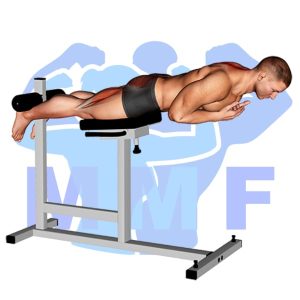
Hyperextension is a great exercise to complement the Lying Knee Raise, as it works the opposing muscle group in the lower back. This exercise strengthens and stabilizes the lower back and glutes, improving posture and balance. It also helps to protect the spine from injury, as well as increases flexibility. Additionally, hyperextension helps to build strength in the core muscles, providing more stability and power when performing other exercises such as the lying knee raise. By working the opposing muscle group, hyperextension allows for a more balanced workout and increases overall fitness levels.
Bench Hyperextension

Bench Hyperextension is a great complementary exercise to the Lying Knee Raise. It works the opposing muscle group of the glutes and lower back, which helps to build strength and stability in the core. It also helps to reduce the risk of injury when performing the Lying Knee Raise, as it strengthens the muscles that are used to stabilize the body during the exercise. By working the opposing muscle group, Bench Hyperextension helps to create balance in the body, allowing for a more effective workout.
Revamp Your Core With Lying Knee Raises
If you’re looking to strengthen your core and target those lower abs, look no further than lying knee raises. By lying flat on your back and raising your legs towards the ceiling, you engage those deep abdominal muscles in a controlled movement. This exercise can be done with or without equipment and is perfect for beginners or advanced fitness enthusiasts alike. Remember to keep your movements slow and intentional, focusing on contracting those lower abs throughout the exercise. Incorporate this move into your routine a few times per week and watch your core strength improve.
References: Wikipedia | ExRx.net | PubMed.gov | Comprehensive List of Abs Bodyweight Exercises

